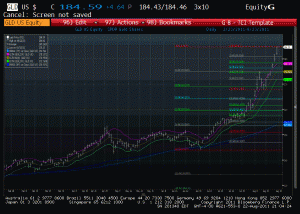 Over the past few months, a noticeable trend in the FX market has been the effort made by many central banks, whether from the Far East, Central and Eastern Europe, or Latin America, to diversify their reserves. Most exporter nations count the U.S. as a major trading partner, and the Eurozone is also a significant destination. The sellers accumulate Dollars and Euros, which have to be invested or exchanged. Until recently, most exporters, including China and Japan, were content to invest their Dollar holdings in Treasuries and other AAA securities. Now, with even long bonds offering low yields – arguably not enough to compensate for the risks of inflation and of being repaid in depreciated Dollars – central banks (“reserve managers”) are looking farther afield.
Over the past few months, a noticeable trend in the FX market has been the effort made by many central banks, whether from the Far East, Central and Eastern Europe, or Latin America, to diversify their reserves. Most exporter nations count the U.S. as a major trading partner, and the Eurozone is also a significant destination. The sellers accumulate Dollars and Euros, which have to be invested or exchanged. Until recently, most exporters, including China and Japan, were content to invest their Dollar holdings in Treasuries and other AAA securities. Now, with even long bonds offering low yields – arguably not enough to compensate for the risks of inflation and of being repaid in depreciated Dollars – central banks (“reserve managers”) are looking farther afield.
Increasingly, they are exchanging their Dollars and Euros, and instead buying bonds denominated in Canadian, Australian and New Zealand Dollars; in the Scandinavian currencies, especially oil-rich Norway, and in Brazilian Reals. The problem is that these bond markets are all small relative to those of the U.S. and the Eurozone. Another alternative is Gold. In the past, this would have been avoided because, of course, Gold pays no interest, but in a global environment of near-zero short term rates, that is no longer such a competitive disadvantage for the metal.
The chart of the GLD ETF, above, illustrates the desire of central bankers and other investors to hold something that is likely to retain its value in the event of an inflationary surge or political upheaval. Central banks typically deal in the spot (XAU) market, but the ETF accurately reflects the ebbs and flows of the demand for the metal. A sign of the times; according to Bloomberg, the GLD ETF today passed the S&P ETF (SPY) to become the largest of its kind, at $76.7 billion versus $74.4 billion,
This chart is too extended at present to look like a very appealing buy to me. The Fibonacci confluence at 174.73, roughly 5.3% below today’s closing price, looks more like a place where if I didn’t have any GLD, I might look to start accumulating a position, although a more significant pullback would of course be welcome. There are occasional reports that one of the large hedge funds that own the ETF is cutting back on, or even eliminating its position; the dips of late haven’t tended to last very long.